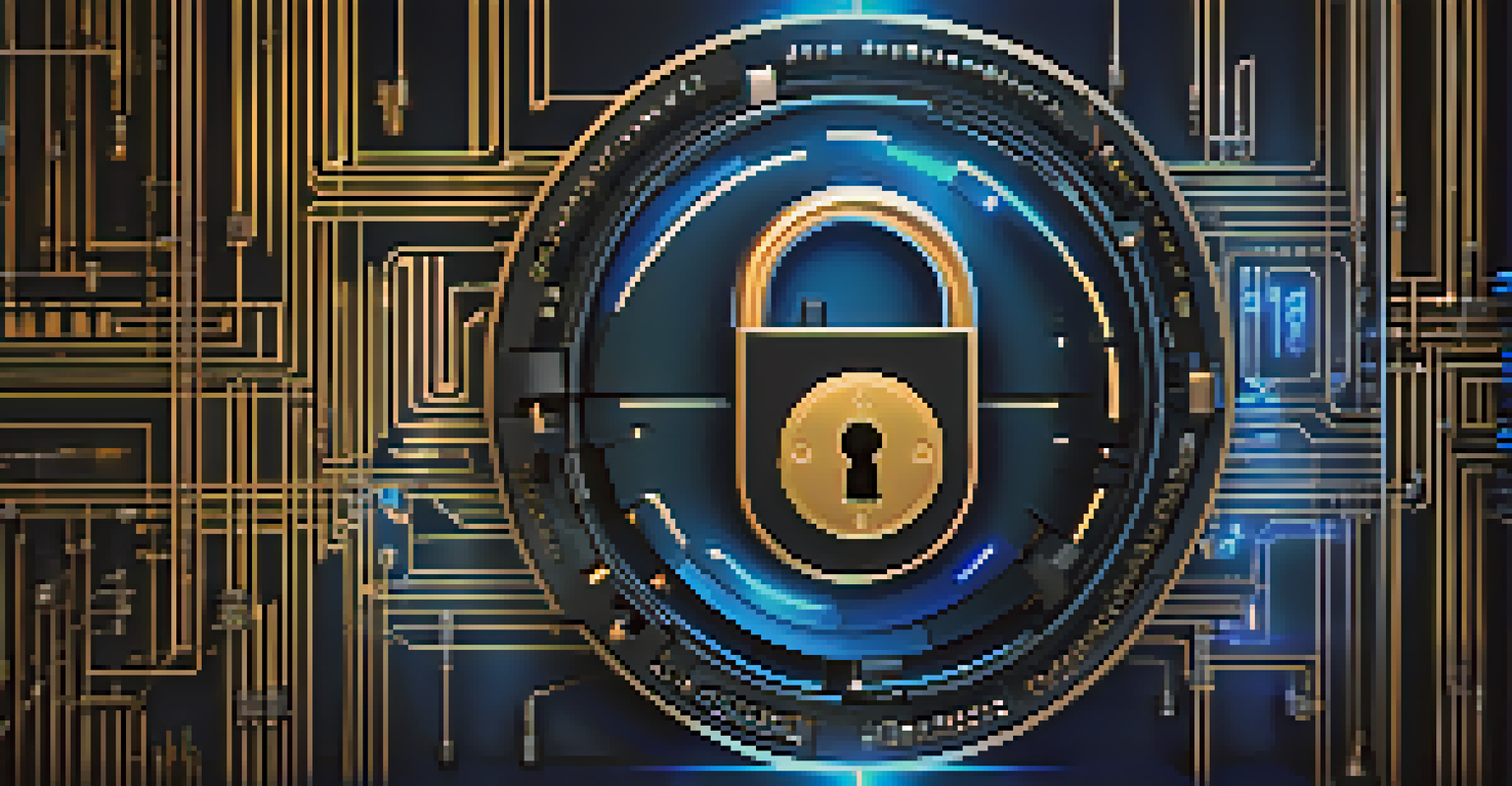Quantum Key Distribution: A Revolutionary Security Technique

What is Quantum Key Distribution (QKD)?
Quantum Key Distribution (QKD) is a cutting-edge method for secure communication that uses the principles of quantum mechanics. Essentially, it allows two parties to generate a shared secret key, which can then be used for encrypting messages. The beauty of QKD lies in its ability to detect eavesdroppers; if someone tries to intercept the key, the quantum state changes, alerting the users.
Quantum mechanics is the science of the very small, and it teaches us that nature is not as simple as it seems.
Think of it like a secret code shared between two friends, but with an added layer of magic. If a third person tries to listen in, the code becomes scrambled, making it useless. This unique property makes QKD an incredibly powerful tool in the realm of cybersecurity.
In a world where data breaches and cyber threats are on the rise, QKD offers a promising solution. By leveraging the laws of quantum physics, it not only enhances security but also builds trust in digital communications.
The Science Behind Quantum Mechanics and QKD
At the heart of QKD is the concept of quantum bits, or qubits, which can exist in multiple states at once, thanks to superposition. When a qubit is measured, it 'collapses' into one of its possible states, a principle that ensures that any attempt to eavesdrop can be easily detected. This is akin to flipping a coin; while in the air, it's both heads and tails, but once it lands, it reveals only one side.

Another intriguing aspect is entanglement, where pairs of qubits become interconnected in such a way that the state of one instantly influences the state of the other, no matter how far apart they are. This phenomenon enables QKD to transmit information securely over long distances, making it incredibly effective for secure communications.
QKD Enhances Communication Security
Quantum Key Distribution provides a secure method for key exchange, alerting users to eavesdroppers and safeguarding digital communications.
Together, these principles form the backbone of QKD, allowing for secure key exchange that traditional methods can't match. By understanding these concepts, we can appreciate why QKD is considered a revolutionary leap in secure communications.
How QKD Enhances Data Security
QKD enhances data security by ensuring that any attempt to intercept the key is detected in real-time. This immediate feedback loop means that users can take action if a breach is suspected, unlike traditional methods where a key might be compromised without anyone knowing. It's like having a security alarm that not only alerts you to a break-in but also prevents the thief from getting in.
In a world where data is constantly under threat, Quantum Key Distribution is not just an option; it's a necessity.
Moreover, because QKD generates unique keys for each session, even if a key is somehow compromised, it can’t be reused. This limits the potential damage that could be caused by a single interception, making the overall system much more robust against attacks.
As a result, organizations that adopt QKD can significantly bolster their defenses against cyber threats. In an era where data is often referred to as the new oil, protecting it with advanced technologies like QKD is not just wise but essential.
Current Applications of Quantum Key Distribution
Currently, QKD is being utilized in various sectors, including finance, government, and healthcare, where data security is paramount. For example, banks are exploring QKD to safeguard sensitive transaction data, while government agencies use it to secure communications related to national security. This real-world application highlights how QKD can be integrated into existing infrastructures.
Additionally, some tech companies are developing QKD networks to create a secure communication framework for businesses and individuals alike. These networks function like a secure highway for data, where only authorized users can access the information being transmitted.
Real-World Applications of QKD
Various sectors, including finance and healthcare, are implementing QKD to protect sensitive data and secure communications.
As more organizations recognize the value of QKD, its adoption is likely to grow, paving the way for a future where secure communications are the norm rather than the exception.
Challenges Facing Quantum Key Distribution
Despite its advantages, QKD faces several challenges that need to be addressed for wider adoption. One of the major hurdles is the cost of implementing QKD systems, which can be prohibitively expensive for many organizations. This includes the infrastructure required to support quantum communication, such as specialized hardware and software.
Another challenge is distance limitations; while QKD can work over long distances, the quality of the transmission can degrade due to environmental factors. Researchers are actively working on solutions like quantum repeaters to extend the range and reliability of QKD systems.
Lastly, the complexity of quantum technology can be daunting for organizations unfamiliar with it. Simplifying the technology and providing adequate training will be crucial for overcoming this barrier and allowing more businesses to benefit from QKD.
The Future of Quantum Key Distribution
The future of QKD looks promising, with ongoing research and advancements paving the way for broader applications. As quantum technology continues to evolve, we can expect to see improvements in efficiency and scalability, making QKD more accessible. This could lead to a significant shift in how organizations approach data security.
Moreover, the integration of QKD with other emerging technologies, such as blockchain and artificial intelligence, has the potential to create even more secure systems. Imagine a world where every transaction is not only encrypted but also verified through a decentralized network—this is the kind of future QKD could help facilitate.
Challenges of Adopting QKD
High implementation costs, distance limitations, and the complexity of quantum technology pose significant barriers to the widespread adoption of QKD.
Ultimately, as cyber threats become more sophisticated, the need for advanced security measures like QKD will only increase. Embracing this technology could be key to ensuring safe and secure digital interactions in our ever-connected world.
Conclusion: Embracing Quantum Key Distribution
In conclusion, Quantum Key Distribution represents a revolutionary step forward in data security. By harnessing the principles of quantum mechanics, it provides a level of security that traditional methods simply cannot match. As cyber threats continue to evolve, adopting technologies like QKD will be vital for protecting sensitive information.
While challenges remain, the potential benefits of QKD are too significant to ignore. Organizations that invest in this technology today may find themselves at a considerable advantage in the future, safeguarding their data against evolving cyber threats.

As we move towards a more digital future, embracing QKD could be a game-changer, offering peace of mind amid the complexities of modern cybersecurity.